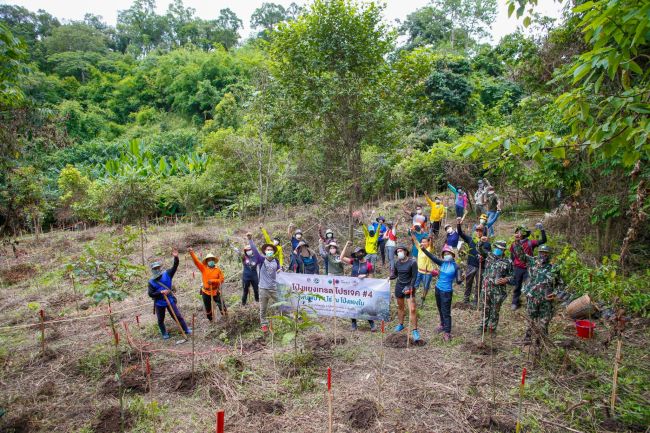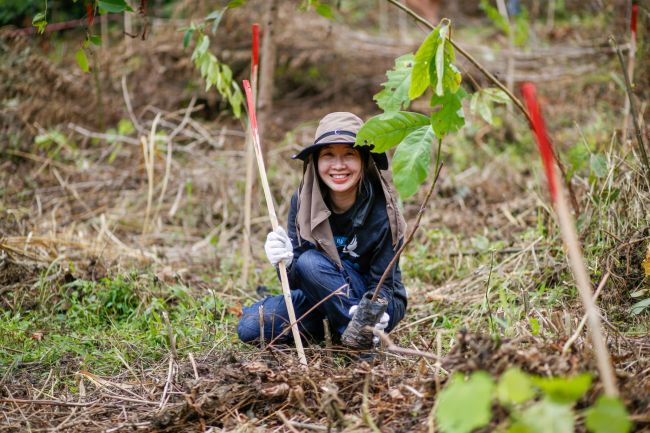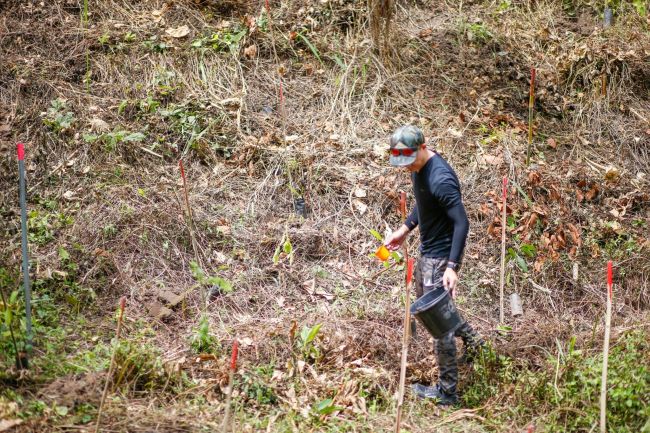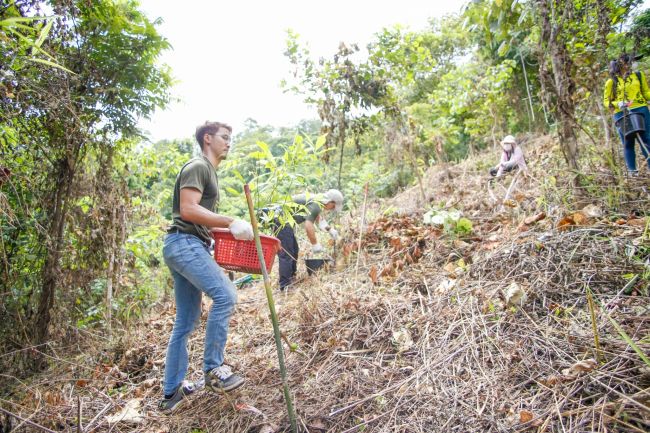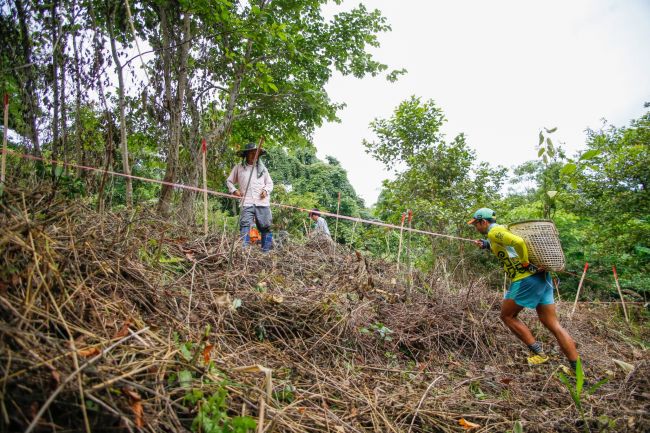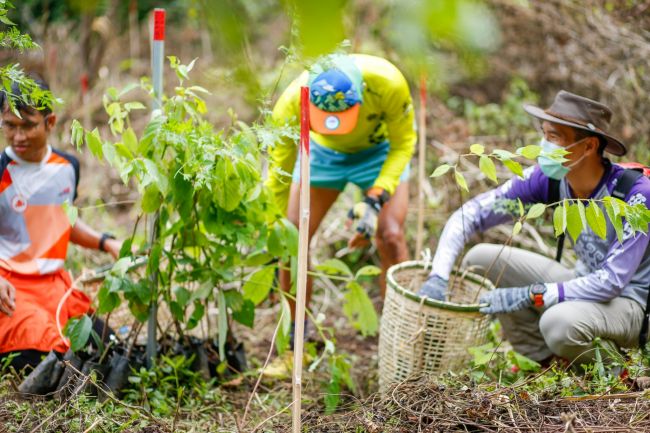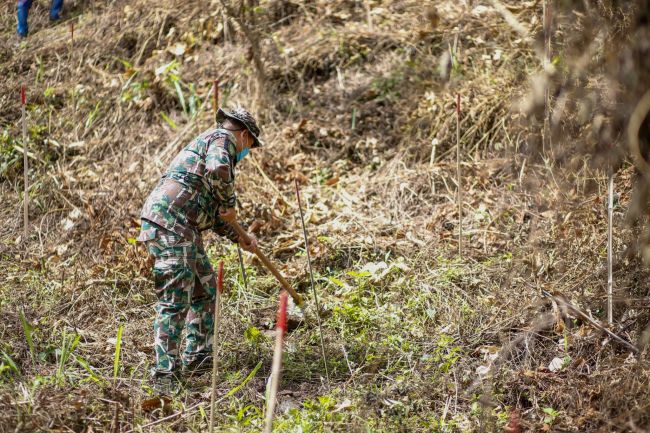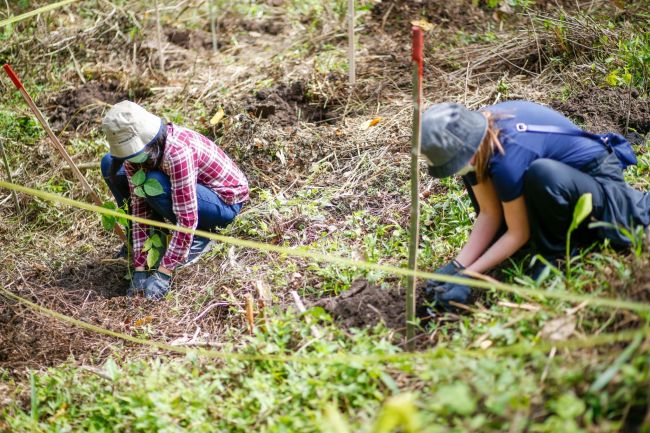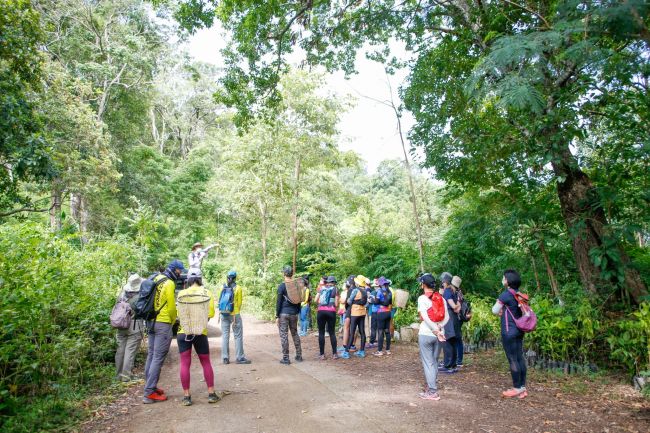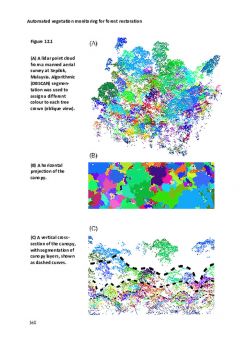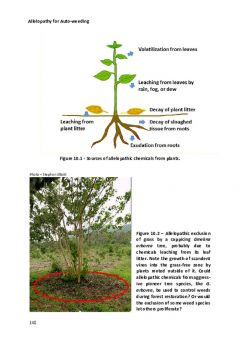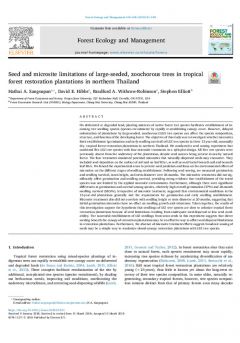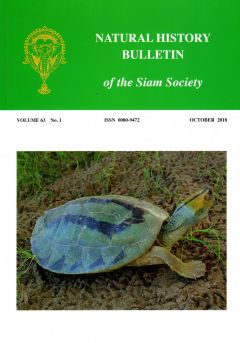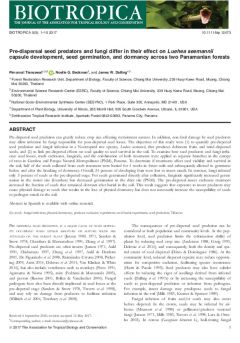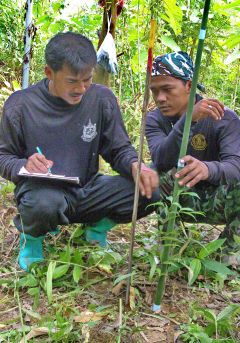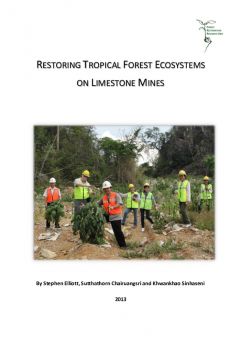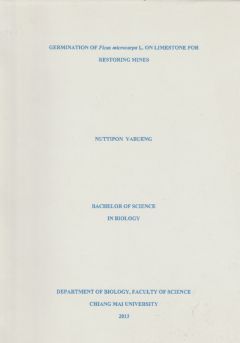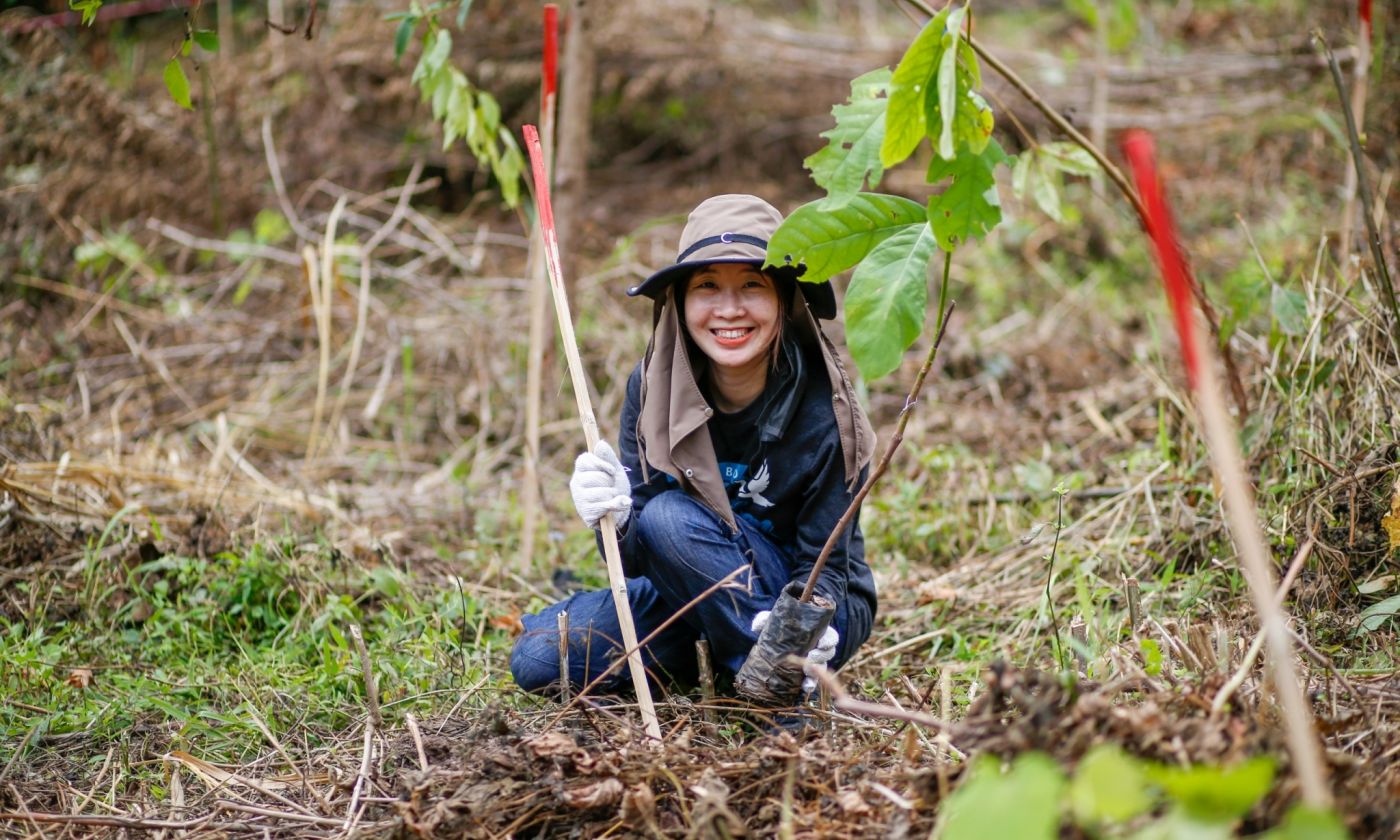
The project is assisting Doi Suthep Nature Center (DSNC), funded by the Pong Yaeng Running Club, to restore forest to four rai (0.64 ha) in Pong Yaeng District, with the participation of a wide range of volunteers and students. The scientific objectives are i) to test suitability of candidate framework tree species for restoring upland evergreen and ii) to determine if application of biochar can boost early tree performance on this highly degraded site.
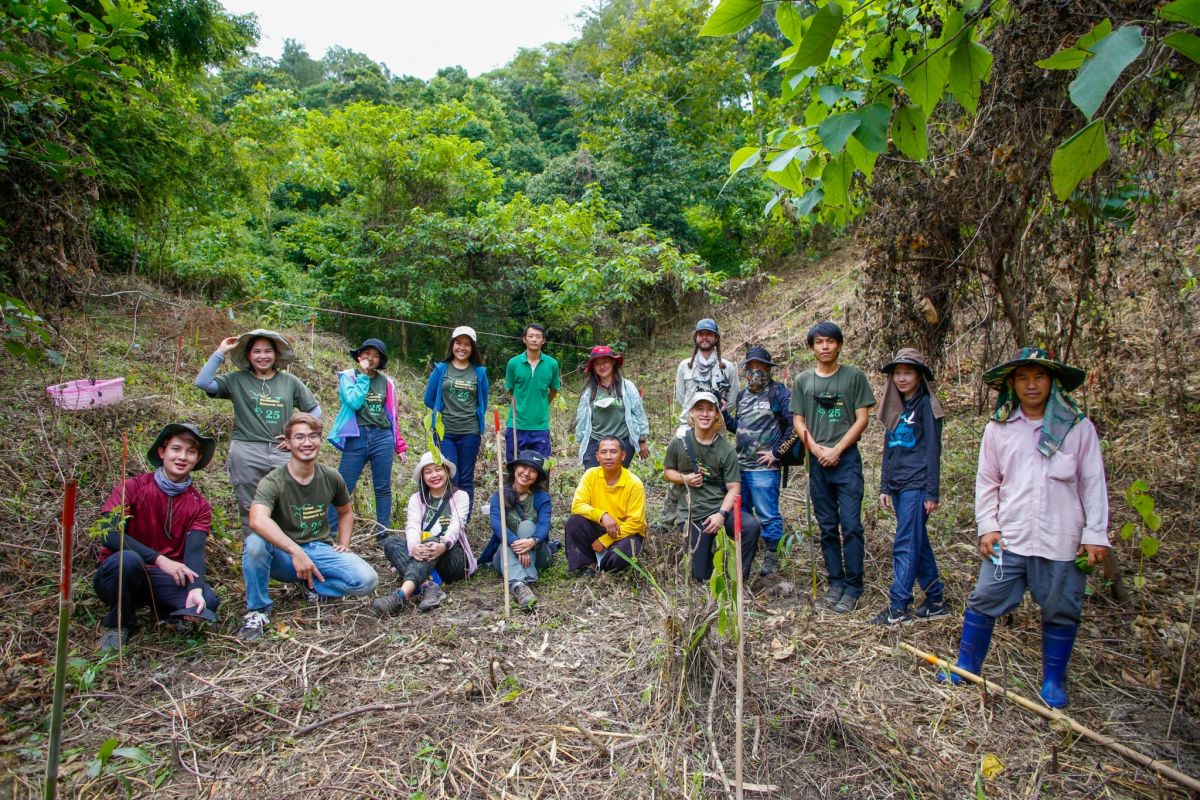
The project plan evolved during the third quarter of 2021 during discussions among FORRU-CMU, DSNC and DNP officers. A rapid site assessment was carried out, to determine the numbers and species of tree saplings required, barriers to restoration and to draft a project plan and budget. Pong Yaeng Running Club generously offered to fund the project and biochar was donated by Warm Heart.
Doi Suthep-Pui National Park Authority aims to reforest burnt, or otherwise degraded, areas within the park and had earmarked this site for restoration since cultivation of the site had ceased 10 years previously and natural forest regeneration was not progressing well.
Pong Yaeng Nai villagers and FORRU-CMU staff prepared the site two days before planting 1,350 trees on August 13th-14th 2021. Baseline monitoring for tree growth and survival was done two weeks thereafter, and maintenance (weeding and fertilizer application) will be performed 3 times per rainy season for 2 years.
Ten pioneer species and 10 climax species were selected for this site. Six species being tested for the effects of biochar: Melia toosendan, Hovenia dulcis, Spondias axillaris, Prunus cerasoides, Alseodaphne andersonii and Alangium kurzii, distributed in 5 subplots with non-treated trees (controls) distributed in the surrounding area. Other species being tested for suitability (without biochar treatment) include Balakata baccata, Acrocarpus fraxinifolius, Mallotus philippensis, Quercus semiserrata, Cryptocarya amygdalina and Cinnamomum iners.
11: Automated vegetation monitoring for forest restoration
ABSTRACT: We discuss the potential of automating vegetation monitoring, to aid forest restoration. We propose that automated monitoring focuses on estimating forest biomass and tree diversity,...
12: Allelopathy for weed management in forest restoration
ABSTRACT: In forest restoration, weeds compete with tree seedlings for water, nutrients, sunlight and space, as well as act as habitat for pests and diseases. Allelopathy - the inhibition of one...
13: Effects of weeds on survival and growth of planted seedlings of native forest tree species during forest restoration in northern Thailand
ABSTRACT: Herbaceous weeds often hinder forest restoration by reducing establishment of planted tree seedlings. The study, presented here, compared survival and health of tree seedlings in the...
14: Seed and microsite limitations of large-seeded, zoochorous trees in tropical forest restoration plantations in northern Thailand
ABSTRACT: On deforested or degraded land, planting mixtures of native forest tree species facilitates establishment of incoming tree seedling species (i.e. "species recruitment") by rapidly...
15: Where science meets communities: developing forest restoration approaches for northern Thailand
ABSTRACT: This paper contrasts lessons learned from two forest restoration research projects in Doi Suthep-Pui National Park, near Chiang Mai City, northern Thailand, which combined science with...
16: Pre-dispersal seed predators and fungi differ in their effect on Luehea seemannii capsule development, seed germination and dormancy across two Panamanian forests
Pre-dispersal seed predation can greatly reduce crop size affecting recruitment success. In addition, non-fatal damage by seed predators may allow infection by fungi responsible for post-dispersal...
17: Fire resilience of framework tree species in hill evergreen forest
This paper won an award for best oral presentation at the national conference: "Biological and Cultural Diversity: Living in Harmony" - run by the NSTDA (National Science and Technology...
18: Selection of native tree species for restoring forest ecosystems
ABSTRACT: The framework species method is a well-established tropical forest restoration technique, which involves planting 20-30 indigenous forest trees species, with high survival and growth...
19: Restoring Tropical Forest Ecosystems on Limestone Mines
This booklet describes basic techniques and species choices for restoring forest on a limestone quarry in northern Thailand, by the framework species method. The methods are specific for a quarry...
20: Germination of Ficus microcarpa on limestone for restoring mines
ABSTRACT: For limestone mining in Thailand, it is stipulated that the site must be reclaimed to the original vegetation after mining is completed. The study area was the Muang Poon semi-opencast...

